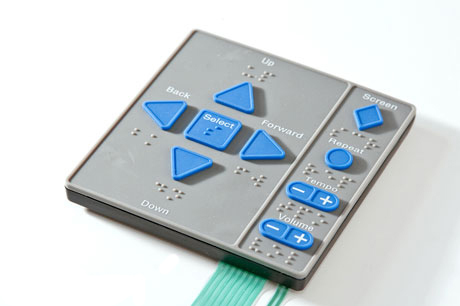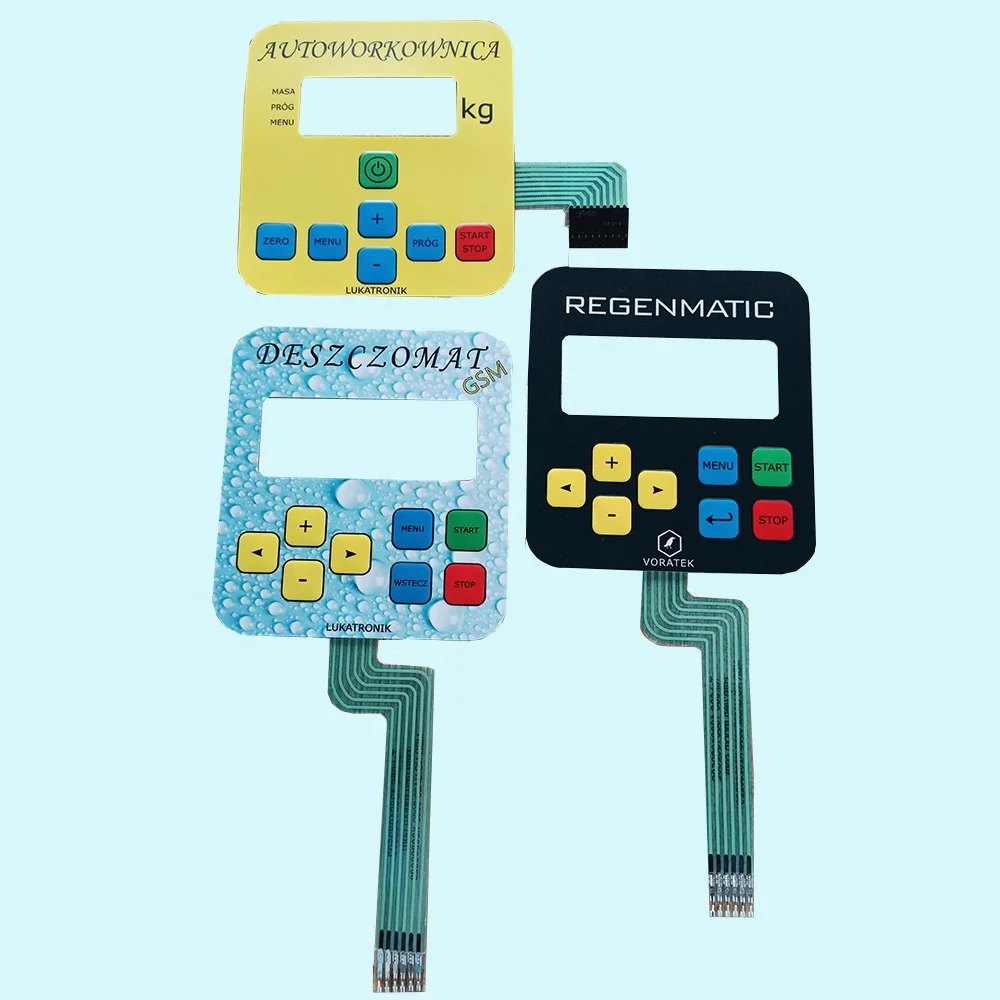Top Features to Look for in a High-Quality Membrane Switch
Top Features to Look for in a High-Quality Membrane Switch
Blog Article
The Benefits of Utilizing Membrane Switches Over in Consumer Electronic Devices
Membrane layer switches are progressively identified for their considerable advantages in customer electronics, specifically in enhancing individual communication and simplifying production processes. Their ability to offer user-friendly user interfaces and responsive feedback can substantially minimize user mistakes, while their light-weight construction and streamlined production steps contribute to cost-effectiveness and quicker market entrance. Additionally, the versatility in layout allows for tailored solutions that meet varied customer requirements. Yet, the implications of these advantages expand beyond simple performance, meaning a transformative potential for the future of electronic gadgets. What additional benefits might emerge as this technology progresses?
Enhanced Customer Experience

In today's competitive landscape of customer electronics, boosted customer experience is extremely important; almost 85% of individuals prioritize intuitive user interfaces. Membrane switches play an essential role in accomplishing this level of use. Their flat, inconspicuous design permits smooth integration into different gadgets, decreasing mass while maintaining capability. This layout visual not only improves the visual charm yet also adds to a much more streamlined individual interaction.
The tactile comments offered by membrane layer switches is necessary for guiding customer activities, making sure that commands are registered properly. This feedback mechanism decreases mistakes and increases user fulfillment, fostering a favorable relationship in between the device and the customer. Moreover, the customizable nature of membrane switches allows makers to tailor user interfaces to certain user requirements, making tools much more accessible and welcoming.
Furthermore, membrane buttons can integrate backlighting and visuals overlays, further enhancing exposure and usability in varied environments. This versatility guarantees that tools stay user-friendly and functional, no matter the setting. On the whole, the assimilation of membrane switches over right into customer electronics substantially boosts customer experience, driving brand commitment and complete satisfaction in a significantly affordable market.
Cost-efficient Production
Consumer electronic devices producers are constantly looking for methods to balance top quality with price, and membrane switches provide a compelling solution for economical production. These parts are naturally easier than standard mechanical switches, which decreases both production expenses and complexity. The lightweight design of membrane layer changes enables reduced shipping expenses and much easier assimilation right into compact tools, better enhancing their allure in an open market.
Makers can produce membrane layer switches in high volumes, benefiting from economic situations of range. This mass production capability ensures regular top quality while significantly decreasing per-unit prices. Additionally, the products made use of in membrane layer switches, such as polyester and polycarbonate, are often cheaper than those required for conventional switch modern technologies, adding to total expense savings.
The production process for membrane layer switches usually calls for less actions and less labor contrasted to various other button types. This structured approach not just saves money on labor costs but also accelerates time-to-market, allowing companies to react promptly to customer demand. The combination of decreased material costs and reliable production processes positions membrane changes as a smart financial investment for suppliers intending to supply top quality customer electronic devices at affordable price points.

Layout Flexibility and Modification
While standard mechanical switches often enforce restrictions on design due to their mass and called for mounting devices, membrane layer buttons supply unequaled adaptability and personalization alternatives for customer electronic devices. This ingenious modern technology enables designers to create smooth, low-profile interfaces that can perfectly integrate right into numerous product aesthetics, from smartphones to kitchen appliances.
Membrane buttons can be generated in practically any type of form or dimension, allowing manufacturers to customize the format to particular ergonomic and practical needs. This adaptability not just improves customer experience yet also allows for artistic styles that straighten with brand name identity. The usage of printed graphics on membrane layer changes uses the chance for intricate layouts and vibrant colors, which can be conveniently changed without considerable price effects.
Furthermore, membrane layer switches can integrate several functionalities right into a single layer, decreasing the requirement for several parts and simplifying setting up procedures. This streamlined style strategy lessens room and weight, making it ideal for small consumer electronics. In general, the style flexibility and customization capabilities of membrane switches encourage makers to introduce, inevitably causing even more straightforward and appealing products.
Sturdiness and Reliability
As technology proceeds to progress, the toughness and integrity of membrane layer buttons have come to be essential factors to consider for manufacturers in the consumer electronic devices sector (membrane switch). Membrane switches are made to withstand harsh environmental conditions, including temperature level variations, moisture, and dust exposure. Their durable building and construction usually entails multi-layered materials that give a reliable barrier against contaminants, making sure durability and constant performance

Additionally, membrane switches can endure a significant number of actuations without loss of performance, usually exceeding countless cycles. This sturdiness converts to decrease substitute costs and reduced downtime for customers and suppliers alike. In general, the combination of ecological durability and mechanical integrity makes membrane layer changes a strategic choice for consumer electronics, ensuring that devices continue to be reliable and functional throughout their designated life expectancy.
Streamlined Item Advancement
The durability and dependability of membrane switches over significantly add to streamlined item advancement in the consumer electronic devices sector. By integrating these buttons early in the style process, producers can lower the complexity and number of parts needed in their items (membrane switch). Membrane buttons are light-weight and portable, enabling much more efficient room utilization within gadgets, which can lead to simplified assembly processes
Additionally, the customization abilities of membrane layer switches make it possible for designers to customize functions especially to consumer requirements without incurring extreme prices or delays. This versatility promotes development, as firms can quickly iterate layouts based on market feedback, ultimately speeding up the time-to-market for new items.
The ease of making membrane layer switches likewise plays a vital duty in product advancement. With modern-day printing methods and products, manufacturing can be scaled effectively, minimizing and reducing lead times waste. This results in lower production costs, enhancing overall profitability.
Verdict
To conclude, membrane switches substantially boost customer electronic devices by supplying an improved individual experience, cost-effective production procedures, and versatile layout alternatives. Their resilience and reliability make sure consistent efficiency in various atmospheres, while structured item development assists in quicker time-to-market. These benefits read what he said collectively add to the innovation and capability of customer devices, resolving the developing needs of users effectively. The integration of membrane switches over stands for a calculated option for producers looking for to optimize product design and efficiency.
Membrane switches are increasingly recognized for their considerable benefits in customer electronics, particularly in enhancing individual communication and simplifying manufacturing processes. Additionally, the materials made use of in membrane layer switches, such as polyester and polycarbonate, are typically much less pricey than those required for traditional switch technologies, adding to click to read overall cost savings.
The manufacturing procedure for membrane changes generally calls for less actions and much less labor contrasted to other button kinds. Unlike conventional mechanical switches, which may use out over time, membrane layer switches over utilize a closed design that minimizes the threat of mechanical failing.In final thought, membrane switches significantly improve consumer electronics by providing a boosted individual experience, cost-efficient manufacturing processes, and functional design options.
Report this page